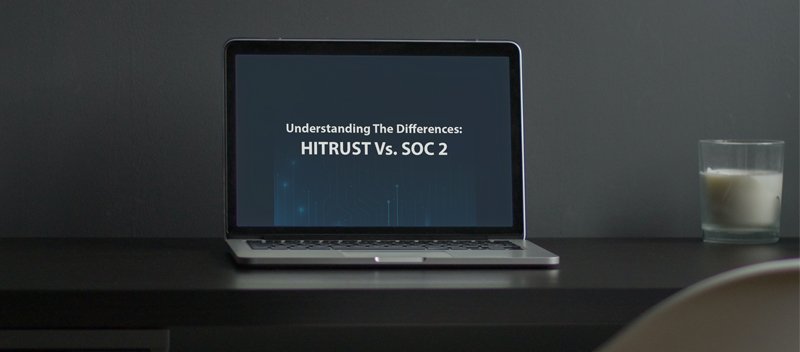Choosing the right compliance framework is a critical decision for healthcare organizations. With sensitive patient data and strict regulations, maintaining high standards for data security is a must. Two of the most common frameworks for healthcare organizations are HITRUST and SOC 2. They both use robust safety features for different things. Even though they aim to protect, how they do it varies. HITRUST is specifically designed for healthcare, while SOC 2 is more general and widely used across various industries. Knowing which one to choose can impact your organization’s compliance strategy, budget, and overall risk management. It is important to understand the differences to make the right choice for your organization.
Understanding HITRUST and Its Purpose
HITRUST stands for the Health Information Trust Alliance, a framework tailored specifically for the healthcare industry. The HITRUST Common Security Framework (CSF) integrates various security, privacy, and regulatory requirements, including HIPAA, NIST, and ISO standards. HITRUST provides a unified approach to managing compliance, ensuring that organizations meet the stringent standards required in healthcare. The framework is highly prescriptive, offering detailed controls that organizations must implement to achieve certification. HITRUST is especially useful for organizations that handle sensitive health information and need to demonstrate compliance with multiple regulations. Getting certified is tough. First, you check your work. Then, someone else comes in to check it, too, to ensure everyone can trust the process.
SOC 2 and Its Applicability
SOC 2 is a framework designed by the American Institute of Certified Public Accountants (AICPA). Unlike HITRUST, which focuses specifically on healthcare, SOC 2 is designed for service organizations across various sectors. It centers on internal security, availability, processing integrity, confidentiality, and data privacy measures. For healthcare organizations, SOC 2 can be a good choice if they are more concerned with general data security than with meeting specific healthcare regulations. SOC 2 provides flexibility, allowing organizations to tailor their controls to their specific needs. The certification involves an independent third-party audit, which can assure customers and partners that the organization is committed to data security. SOC 2 reports come in two types: Type I and Type II. Type I focuses on the design of controls, while Type II evaluates the effectiveness of those controls over time.
Key Differences Between HITRUST and SOC 2
The main difference between HITRUST and SOC 2 lies in their scope and level of detail. HITRUST is specifically designed to meet healthcare regulations and is considered more comprehensive. This framework covers many standards and guides you step by step on keeping data safe and private. This makes it ideal for organizations that need to comply with multiple healthcare regulations. SOC 2, on the other hand, is more flexible and less prescriptive. It allows organizations to choose which Trust Service Criteria to focus on based on their business model and risks. For healthcare organizations that do not need to comply with specific regulations like HIPAA, SOC 2 could be a less costly and more straightforward option. However, HITRUST might provide a more robust and recognized level of assurance in the healthcare industry.
Cost Considerations for HITRUST and SOC 2
Cost is another important factor when deciding between HITRUST and SOC 2. HITRUST certification can be expensive due to the extensive requirements and the need for continuous monitoring and updates. Organizations need to budget for both the certification process and ongoing maintenance. The initial cost includes a readiness assessment, gap analysis, and the final certification audit. In contrast, SOC 2 can also be costly, but the expenses are generally lower compared to HITRUST. SOC 2 requires regular audits to maintain compliance, but organizations have more flexibility in managing costs. The overall cost depends on the scope of the audit, the type of report (Type I or Type II), and the level of preparation needed to pass the audit.
Making the Right Choice for Your Healthcare Organization
Deciding between HITRUST and SOC 2 depends on your organization’s specific needs and regulatory obligations. If your organization is heavily regulated by healthcare laws such as HIPAA, HITRUST may be the better choice. It provides a comprehensive approach to compliance, covering multiple regulations within one framework. Following these steps saves time and resources. It’s innovative and efficient. On the other hand, if your organization is more focused on general data security and does not need to comply with as many specific healthcare regulations, SOC 2 might be more appropriate. It offers flexibility and can be tailored to meet your organization’s unique needs without the added complexity of HITRUST.
Choosing between HITRUST and SOC 2 is a crucial decision for any healthcare organization. HITRUST offers a detailed and comprehensive approach to data security that is specifically designed for healthcare. It is ideal for organizations that must comply with various regulations. However, SOC 2 provides a flexible framework that is adaptable to different business models and industries. It might be a better choice for organizations that want to focus on general data security without the added complexity of healthcare-specific requirements. By carefully considering your organization’s needs, regulatory requirements, and budget, you can select the framework that will best support your data security and compliance efforts. Both frameworks have their strengths, and choosing the right one will help protect patient data and build trust in your organization.


